Secret Hacks to Pick the Perfect Produce Every Time
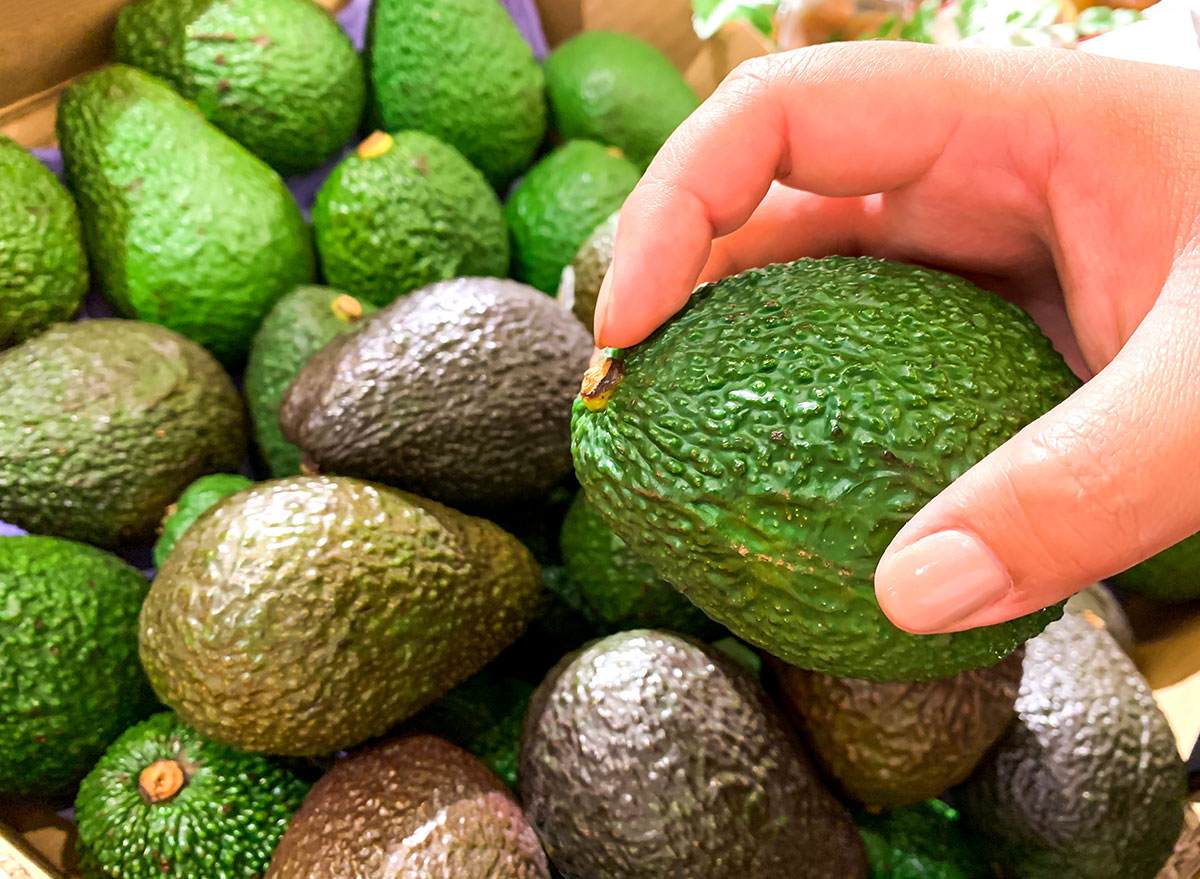
Refusing to eat carrots or skipping the salad bar aren’t just habits exhibited by picky kids. As it turns out, most grown-ups aren’t eating their fruits and veggies, either. Federal guidelines recommend adults eat at least 1 1/2 to 2 cups of fruit and 2 to 3 cups of vegetables a day. But only 9% of adults eat enough vegetables and just 12% of kids meet the requirement for fruit, according to a new report from the U.S. Centers for Disease Control and Prevention (CDC).
Making sure you’re getting your daily fill of produce isn’t the only problem; finding the best, ripest, and tastiest fruits and vegetables isn’t as intuitive as you might think. It’s a task that requires all five senses to decipher the quality of your supermarket produce. Regardless of what you’re shopping for, start with these three rules:
1. Beautiful Doesn’t Mean Delicious: Sub-par conventional produce is bred to look waxy, glistening, and perfectly symmetrical, while prime fruits and vegetables are often irregularly shaped, with slight visual imperfections outside but a world of flavor waiting inside.
2. Use Your Hands: You can learn more about a fruit or vegetable from picking it up than you can from staring it down. Heavy, sturdy fruits and vegetables with taut skin and peels are telltale signs of freshness.
3. Shop with the Seasons: In the Golden Age of the American supermarket, Chilean tomatoes and South African asparagus are an arm’s length away when our soil is blanketed in snow. Sure, sometimes you just need a tomato, but there are three persuasive reasons to shop in season: It’s cheaper, it’s better, and it’s better for you.
To dig even deeper into our hunt for perfect produce, we asked Aliza Green, author of Field Guide to Produce, and Chef Ned Elliott of Portland’s Urban Farmer restaurant for the dirt on scoring the best of the bounty. Use the tips and tricks that follow and you’ll bring home the best fruits and vegetables every time. And before you even head to the store, check out these 46 Best Supermarket Shopping Tips Ever.
Apples
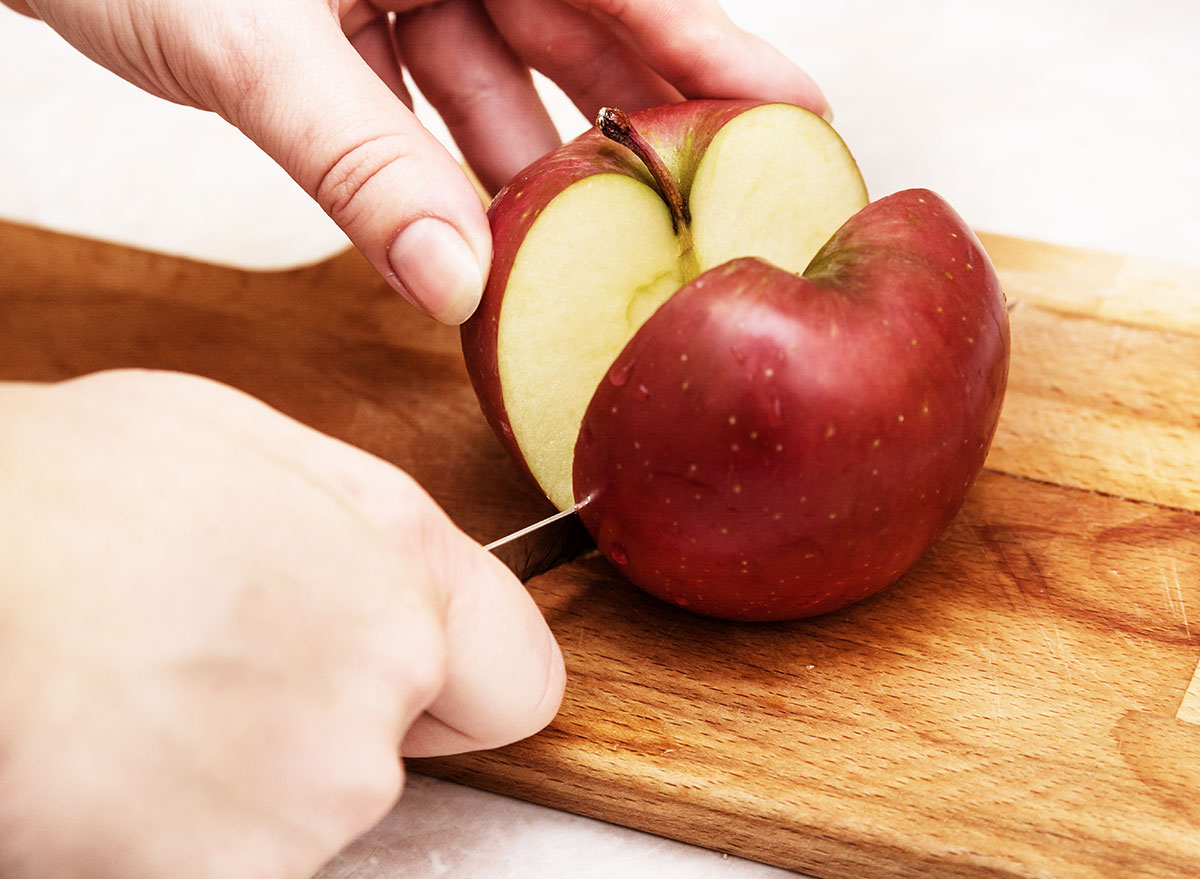
Peak season: September to May
How to pick: Look for apples that are firm and heavy for their size with smooth, matte, unbroken skin and no bruising. The odd blemish (read: wormhole) or brown “scald” streaks do not negatively impact flavor. The smaller the apple, the bigger the flavor wallop.
How to store: To make your produce last longer, keep apples in a plastic bag in the crisper away from vegetables. Here, they should remain edible for several weeks.
Health benefits: These fall and spring favorites are packed with quercetin, a flavonoid linked to better heart health, plus the soluble fiber pectin, which keeps cholesterol in check. Concerned about cholesterol? Stock up on these 17 Foods That Lower ‘Bad’ Cholesterol Levels.
Strawberries

Peak season: June to August
How to pick: Seek out unblemished berries where the bright red color extends all the way to the stem. Good berries should have a strong fruity smell and be neither soft and mushy nor hard and firm. Smaller strawberries often have more flavor than the oversized mega-mart versions.
How to store: Place unwashed strawberries in a single layer on a paper towel in a covered container. They will last for 2 to 3 days in the fridge.
Health benefits: Strawberries have the most vitamin C of any of the commonly consumed berries. Sliced up, they make tasty additions to smoothies, overnight oats, and whole-grain cereal.
STAY INFORMED: Sign up for our newsletter to get the latest food news delivered directly to your inbox.
Asparagus
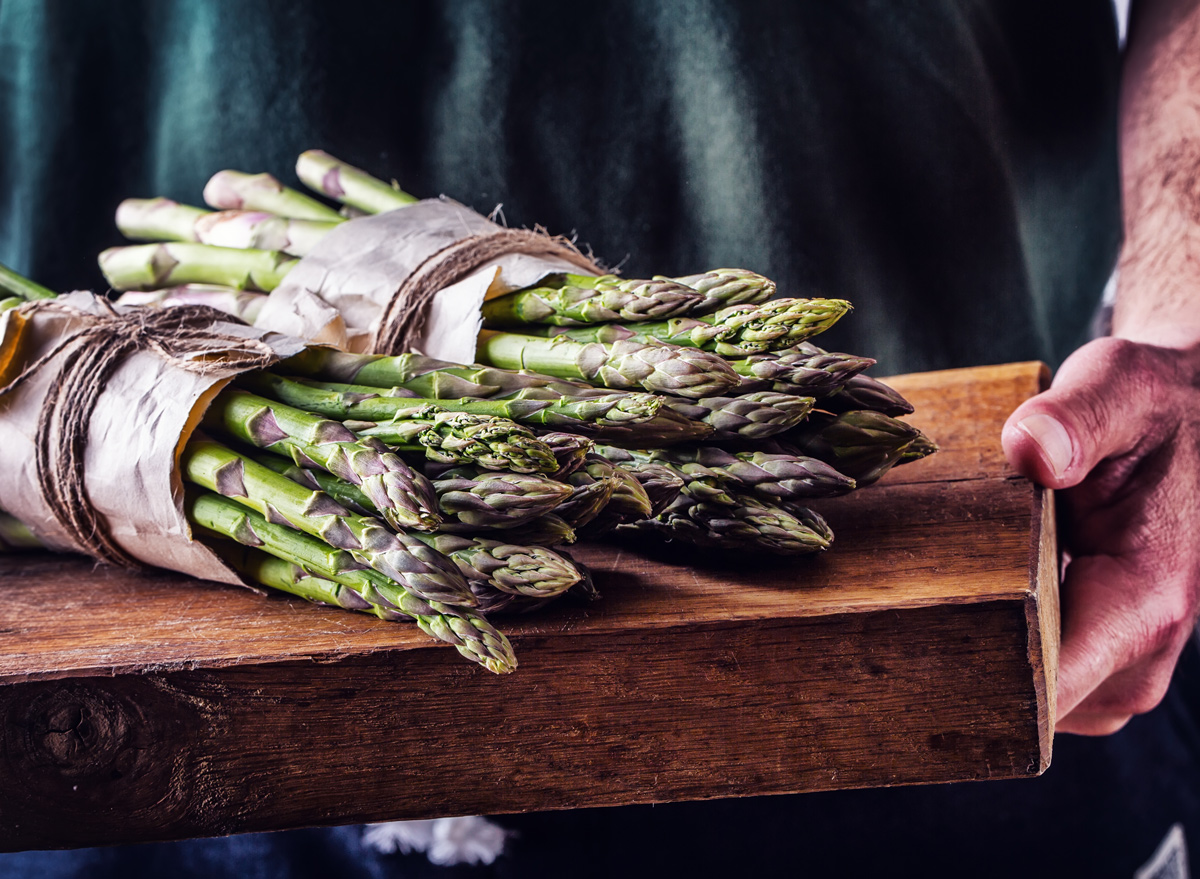
Peak season: March to June
How to pick: Look for vibrant green spears with tight purple-tinged buds. Avoid spears that are fading in color or wilting. Thinner spears are sweeter and more tender.
How to store: Trim the woody ends and stand the stalks upright in a small amount of water in a tall container. Cover the tops with a plastic bag and cook within a few days.
Health benefits: Asparagus are potent sources of folate, a B-vitamin that protects the heart by helping to reduce inflammation. Add that to the list of 30 Best Anti-Inflammatory Foods.
Avocados
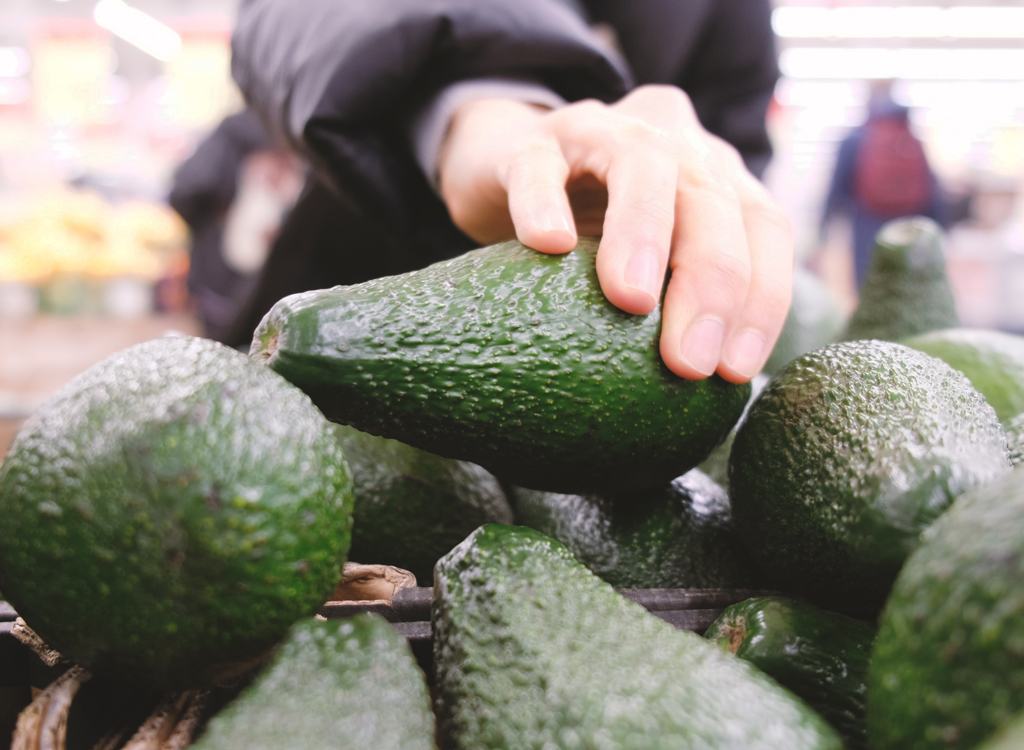
Peak season: Year-round
How to pick: Avocados should feel firm to the touch without any sunken, mushy spots. They should not rattle when shaken—that’s a sign the pit has pulled away from the flesh.
How to store: To ripen, place avocados in a paper bag and store at room temperature for 2 to 4 days. To speed up this process, add an apple to the bag, which emits ripening ethylene gas. Ripe avocados can be stored in the fridge for up to 1 week.
Health benefits: The green berry (yes, we said berry!) packs plenty of cholesterol-lowering monounsaturated fat. Bonus: A diet rich in monounsaturated fat may prevent body fat distribution around the belly by downregulating the expression of certain fat genes. Simply put: It can whittle your waist by zapping away belly fat.
Bananas
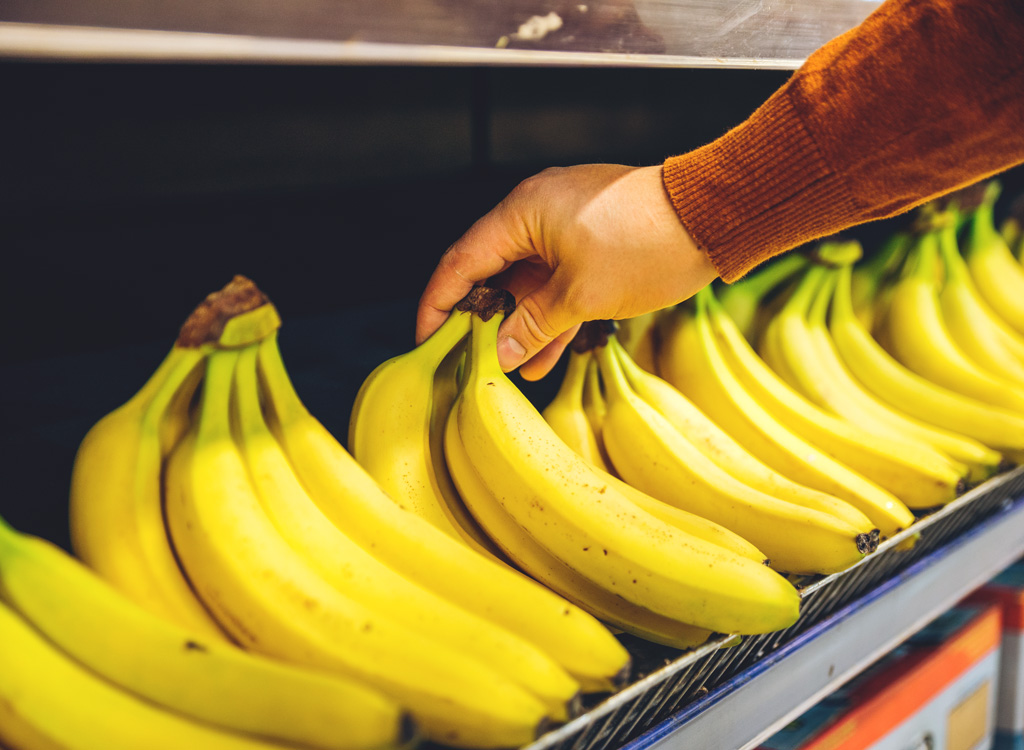
Peak season: Year-round
How to pick: Ripe bananas have uniform yellow skins or small brown freckles indicating they are at their sweetest. Avoid any with evident bruising or split skins.
How to store: Store unripe bananas on the counter, away from direct heat and sunlight (speed things up by placing green bananas in an open paper bag). Once ripened, refrigerate; though the peel turns brown, the flavor and quality are unaffected.
Health benefits: Bananas are a good source of vitamin B6, which helps prevent cognitive decline, according to scientists at the USDA. By the way, You’re Eating Bananas Wrong—Here’s the Right Way.
Zucchini
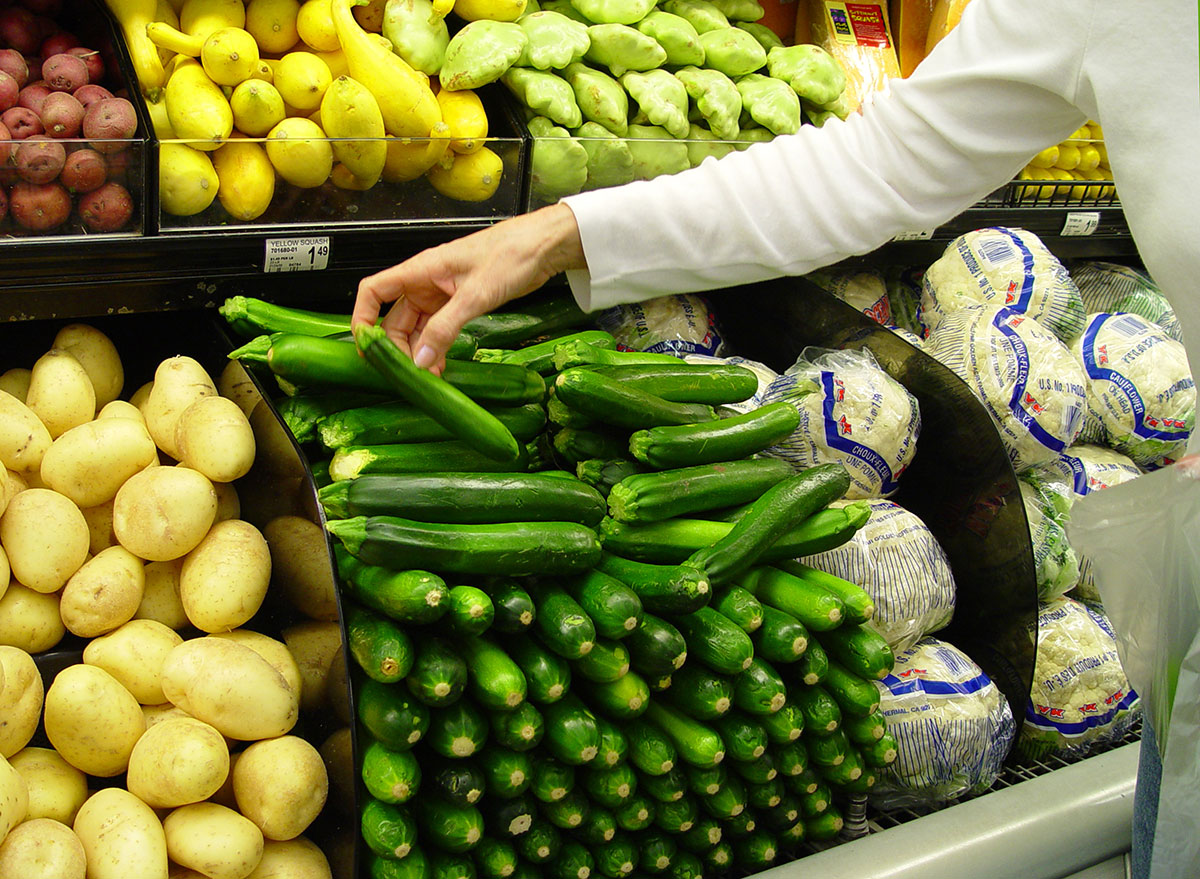
Peak season: June to August
How to pick: Purchase heavy, tender zucchini with unblemished deep-green skins that are adorned with faint gold specks or strips. Smaller zucchinis are sweeter and more flavorful.
How to store: Refrigerate in the crisper in a plastic bag for up to 5 days.
Health benefits: Zucchinis are a superior source of riboflavin, a B vitamin needed for red blood cell production and for converting carbohydrates to energy. Use it to make zoodles, with the help of these 21 Mouthwatering Spiralizer Recipes.
Bell Peppers
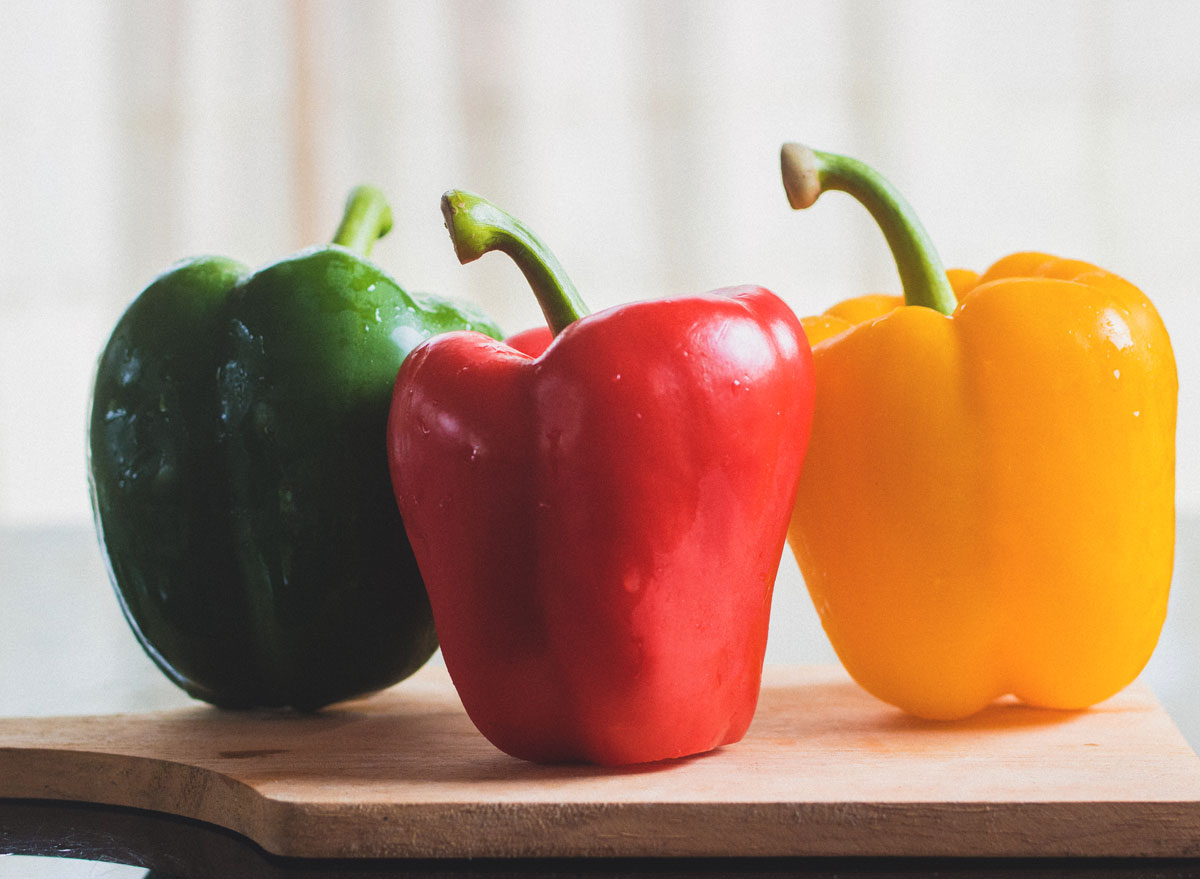
Peak season: July to December
How to pick: A perfect bell pepper should have lots of heft for their size with a brightly colored, wrinkle-free exterior. The stems should be a lively green.
How to store: Refrigerate in the crisper for up to 2 weeks.
Health benefits: All bell peppers are loaded with antioxidants, especially vitamin C. Red peppers lead the pack, with nearly three times the amount of vitamin C found in fresh oranges. A single serving also has a full day’s worth of vision-protecting vitamin A.
Blueberries
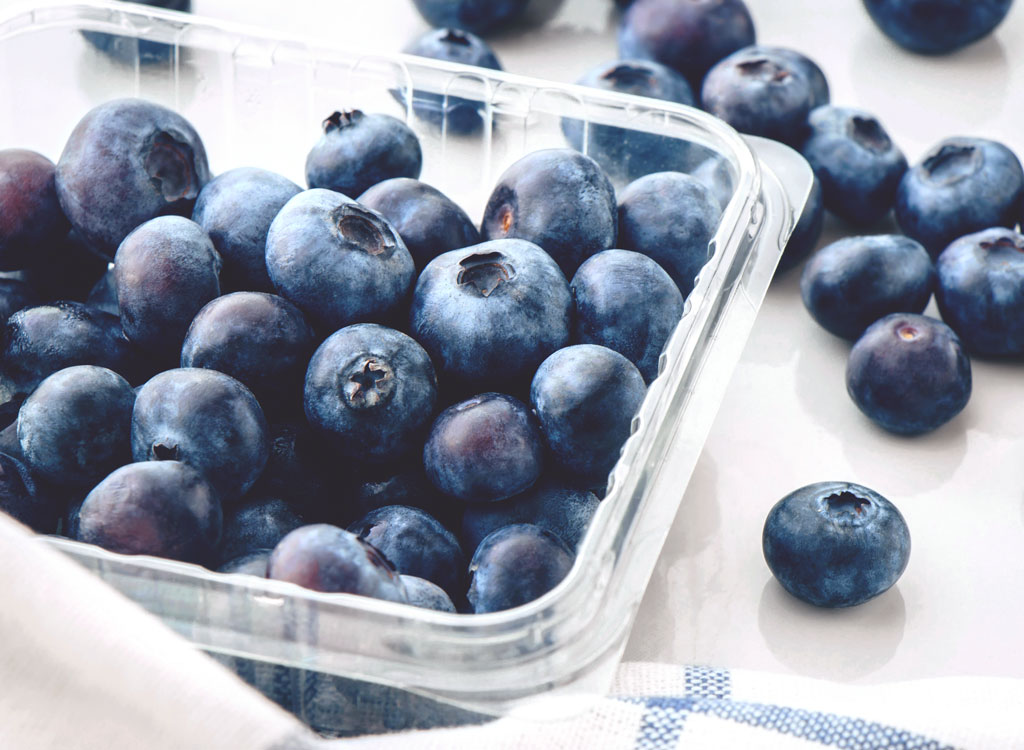
Peak season: June to August
How to pick: Look for plump, uniform indigo berries with taut skin and a dull white frost. Check the bottom of the container for juice stains indicating many crushed berries. Those with a red or green tinge will never fully ripen.
How to store: Transfer, unwashed, to an airtight container and refrigerate for 5 to 7 days. Blueberries spoil quickly if left at room temperature.
Health benefits: Blueberries have more disease-fighting antioxidants than most commonly consumed fruits, according to Cornell University researchers. Another study out of the University of Michigan found that rats that ate blueberry powder as part of their meals lost belly fat and had lower cholesterol levels than their counterparts—even when they ate a high-fat diet. It’s theorized that the catechins in blueberries activate the fat-burning gene in belly-fat cells.
Broccoli

Peak season: October to May
How to pick: Look for veggies with rigid stems and tightly formed floret clusters that are deep green or tinged purple. Pass on any with yellowing heads—they will inevitably be more bitter.
How to store: Place in a plastic bag and store in the refrigerator for up to 1 week.
Health benefits: These mini trees are filled to the brim with sulforaphane, a phytonutrient that activates enzymes that seek out and destroy cancerous cells. Sulforaphane has also been shown to boost testosterone and fights off body fat storage, making it one of the best foods to lose weight.
Potatoes
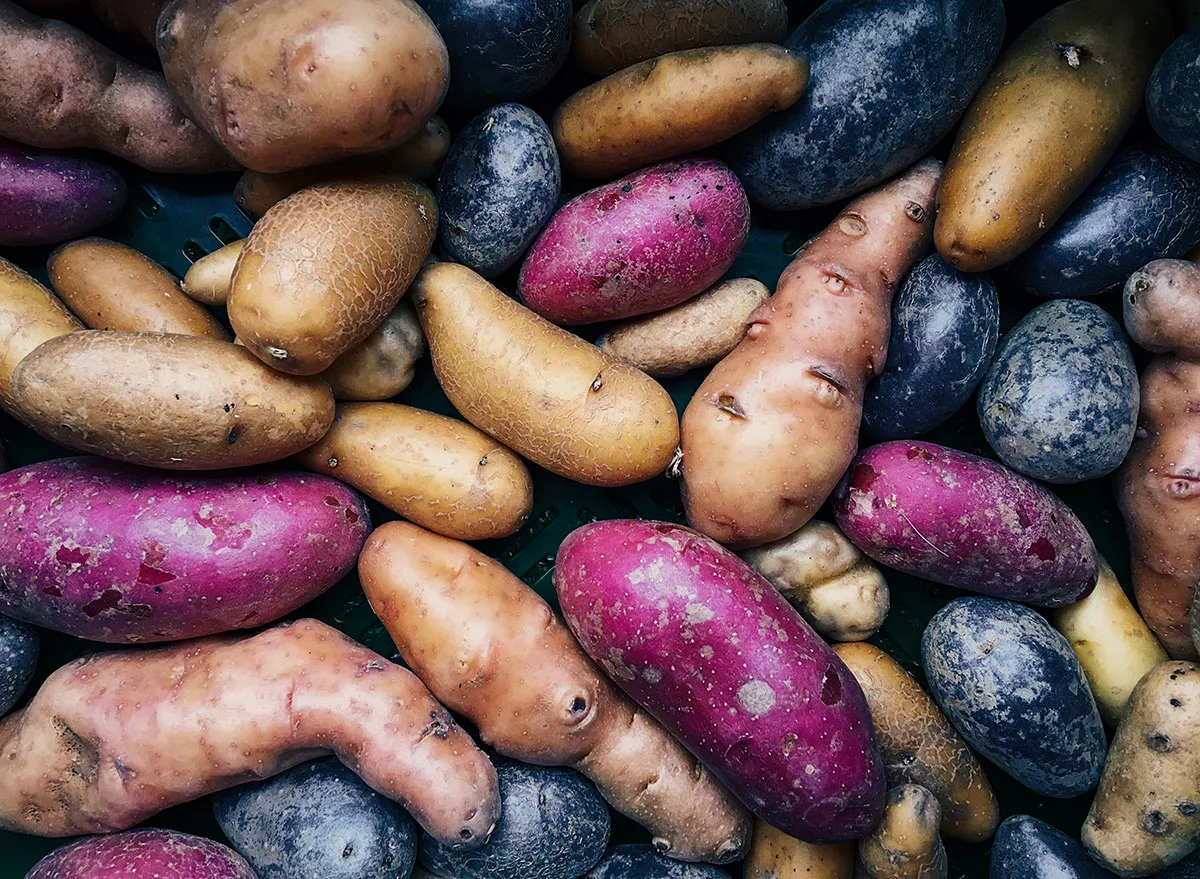
Peak season: Sweet, September to December; white, year-round
How to pick: Whether you’re stocking up on white or sweet potatoes, look for a tater with unyielding, with smooth undamaged skin. Avoid if bruised, cracked, or green tinged. Loose spuds tend to be better quality than bagged.
How to store: Store your spuds outside of the fridge, in a cool, dark place. So long as they’re separated from onions, potatoes will last for months. Sweet potatoes, however, should be used within a week.
Health benefits: Potatoes are filled with potassium, which flushes out excess water and stops belly bloat. The mineral may also help preserve muscle mass as we age.
Mushrooms
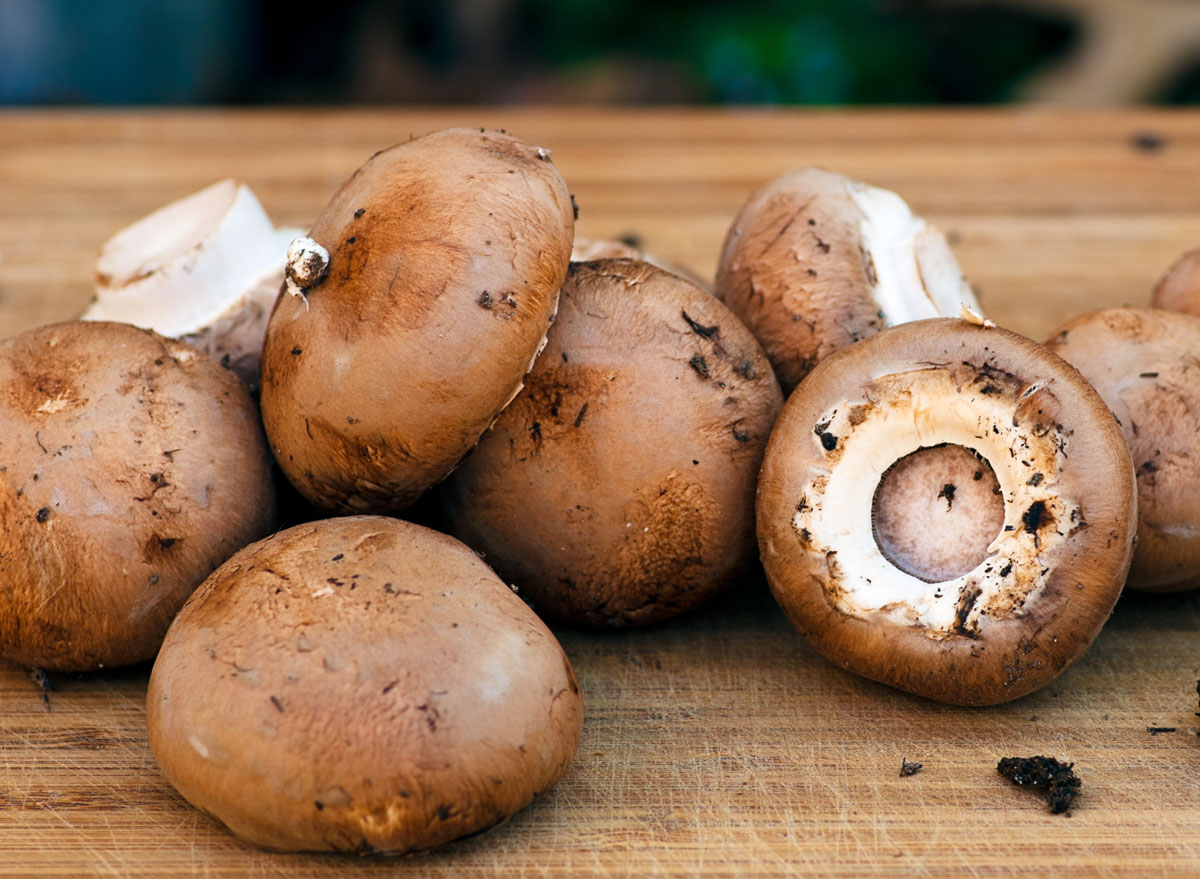
Peak season: November to April
How to pick: Whether you’re stocking up on button or cremini mushrooms, looks for veggies with tightly closed, firm caps that are not slimy or riddled with dark soft spots. Open caps with visible gills indicate consumption should be a priority.
How to store: Place meaty mushrooms on a flat surface, cover with a damp paper towel, and refrigerate for 3 to 5 days.
Health benefits: Shrooms are a potent source of immune-boosting, tumor-suppressing complex-carbohydrate polysaccharides.
Carrots
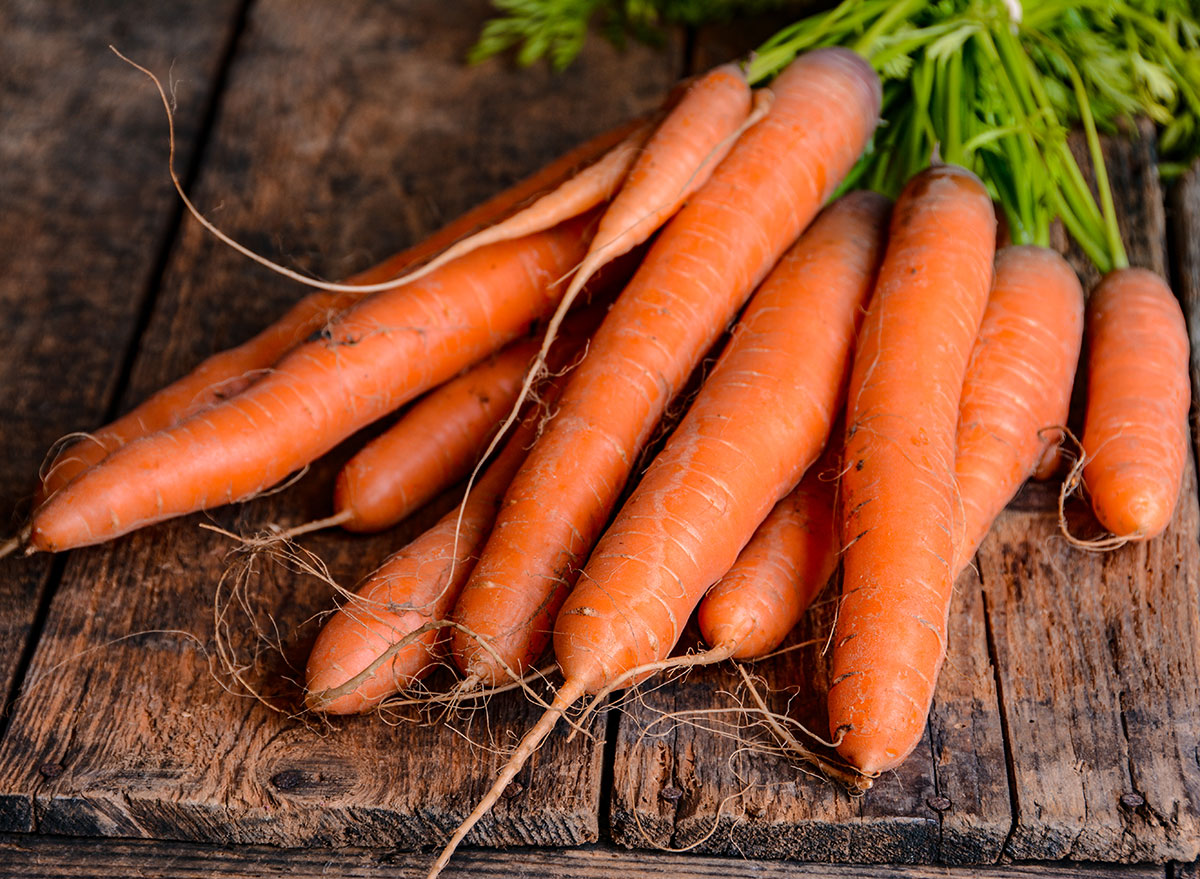
Peak season: Year-round
How to pick: Carrots should be smooth and firm with bright orange color. Avoid those that are bendable or cracked at the base. Bunches with bright green tops still in place are your freshest choice.
How to store: Store carrots in the crisper in a plastic bag with the greens removed for up to 3 weeks.
Health benefits: Bugs Bunny’s favorite veggie carries tons of beta-carotene, a nutrient that helps fight off infections. They’re also a great source of vitamin K and potassium.
Cauliflower

Peak season: September to November
How to pick: When shopping for cauliflower, look for a veggie that’s ivory white with compact florets, There should be no dark spotting on the florets or the leaves. The leaves should be verdant and perky.
How to store: Refrigerate, unwashed, in a plastic bag for up to 1 week. If light brown spots develop on the florets, shave off with a paring knife before cooking.
Health benefits: The veggie is filled with detoxifying compounds called isothiocyanates, which offer protection against aggressive forms of prostate cancer.
Lemons & Limes
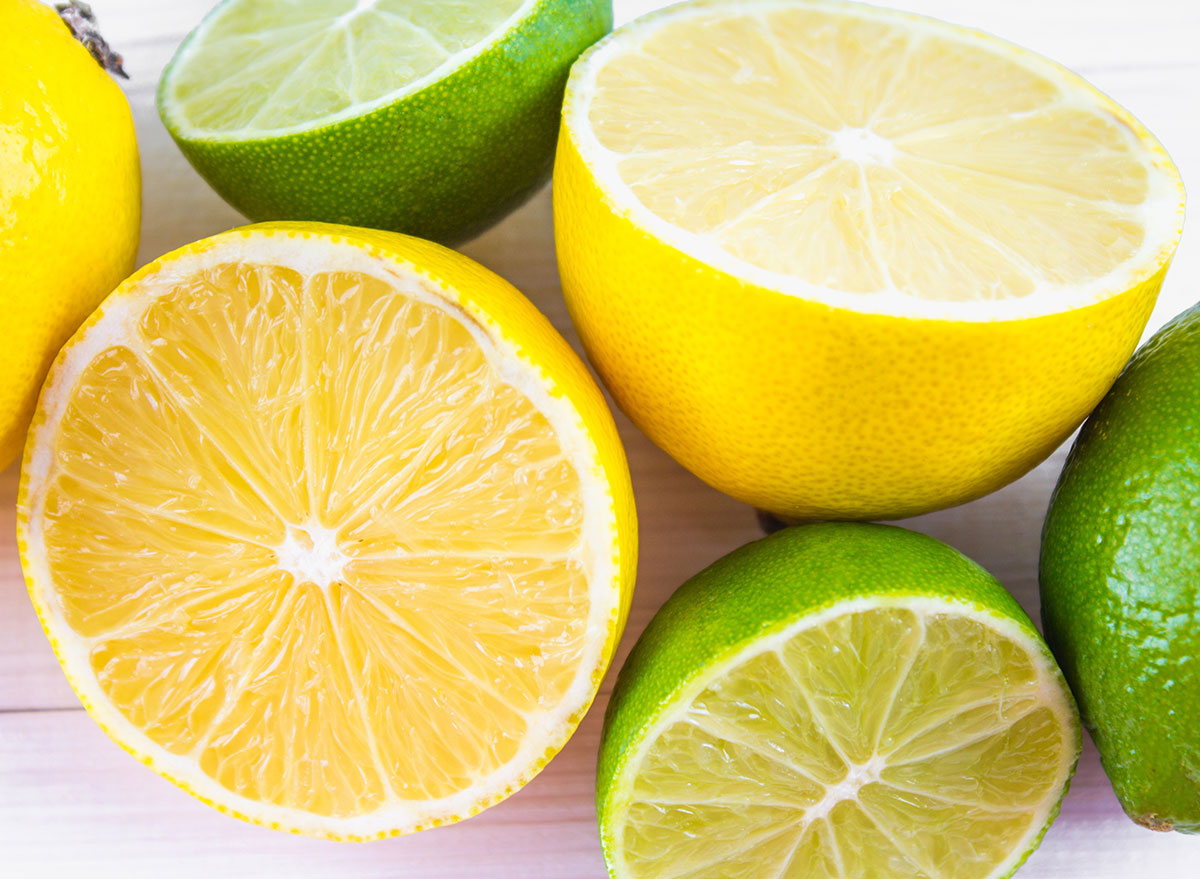
Peak season: Lemons, year-round; limes, May to October
How to pick: Lemons and limes should be brightly colored, well-shaped with smooth, thin skin. They should feel sturdy but give ever so slightly when squeezed. Small brown splotches on limes do not affect flavor (although they are a sign of deterioration and those with splotches should be consumed first). Lemons should have no hint of green.
How to store: Store at room temperature, in a dark location, for about 1 week or refrigerate for up to 2 weeks.
Health benefits: The yellow and green fruits contain the phytonutrient limonoids, which appear to have anticancer, antiviral properties. They both make refreshing additions to detox water.
Romaine Lettuce
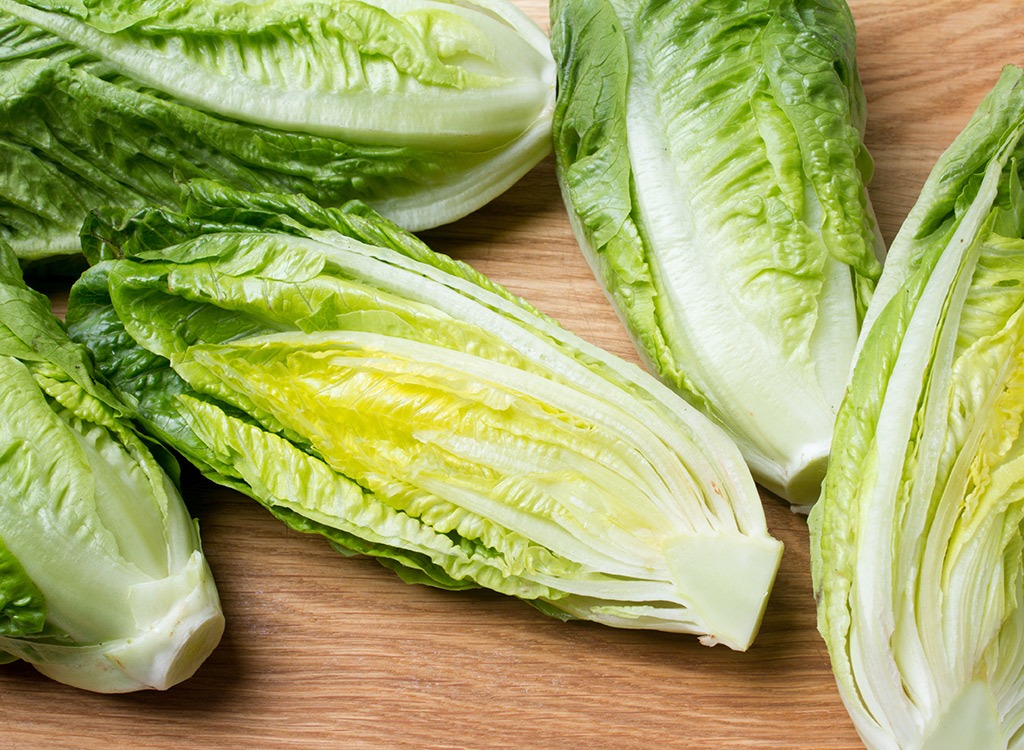
Peak season: Year-round
How to pick: The ideal Caesar salad staple has crisp leaves that are free of browning edges and rust spots. The interior leaves are paler in color with more delicate flavor.
How to store: Refrigerate romaine for 5 to 7 days in a plastic bag.
Health benefits: Romaine is a solid source of vitamin K, which is needed for blood clotting and bone health.
Mangoes
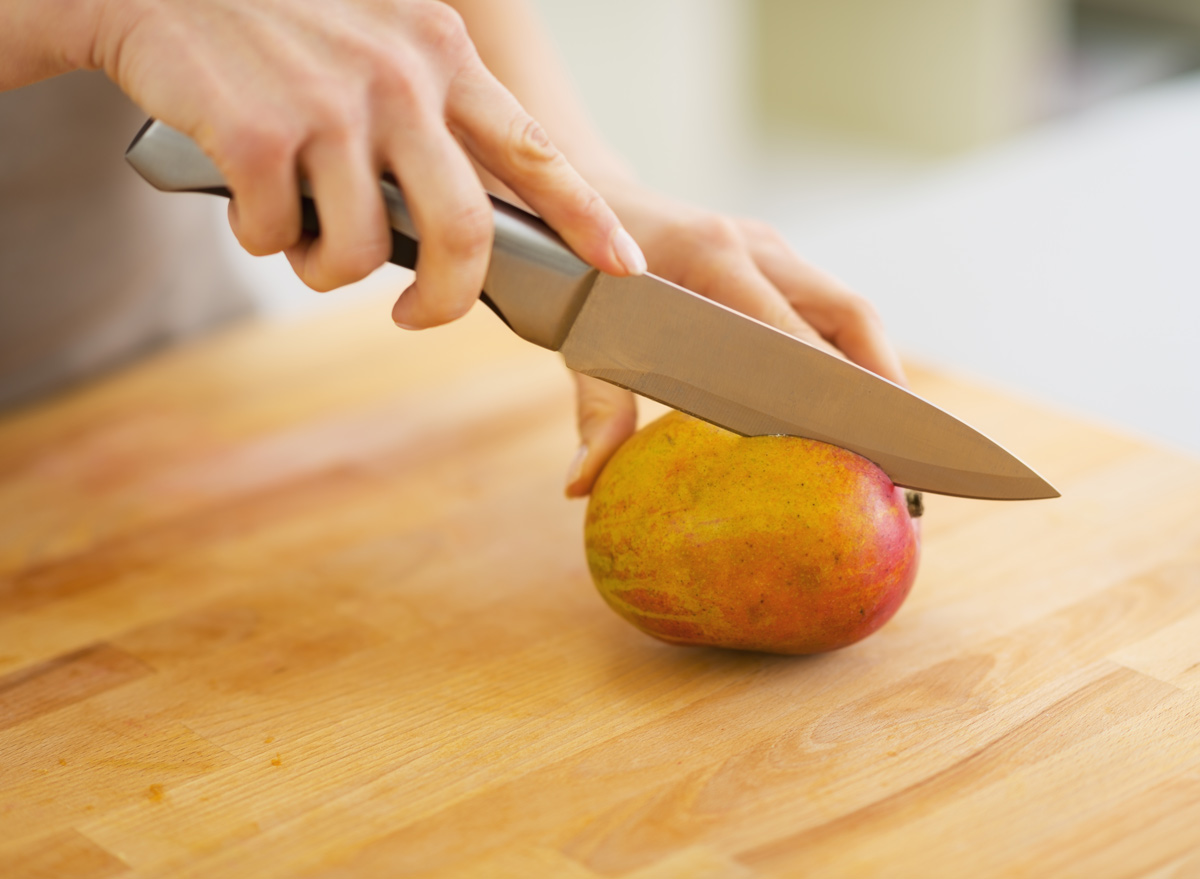
Peak season: April to August
How to pick: Mangoes that will be eaten shortly after purchase should have red skin with splotches of yellow, and the soft flesh should give with gentle pressure. Mangoes for later use will be firmer with a tight skin, a duller color, and green near the stem.
How to store: Ripen at room temperature until fragrant and giving. Ripe mangoes can be stored in the fridge for up to 5 days.
Health benefits: Mangoes have a good showing of vitamins A, B6, and C, plus fiber, a nutrient strongly associated with weight loss.
Garlic

Peak season: Year-round
How to pick: A fresh garlic bulb should feel heavy for its size, with tightly closed cloves in the bulb that remain firm when gently pressed. The skin can be pure white or have purple-tinged stripes and should be tight fitting.
How to store: Place bulbs in a cool, dark, well-ventilated location for up to 1 month.
Health benefits: Garlic contains the cancer-fighting compound allicin, which has also been shown to fight off the bacteria responsible for the development of stomach ulcers.
Grapefruit
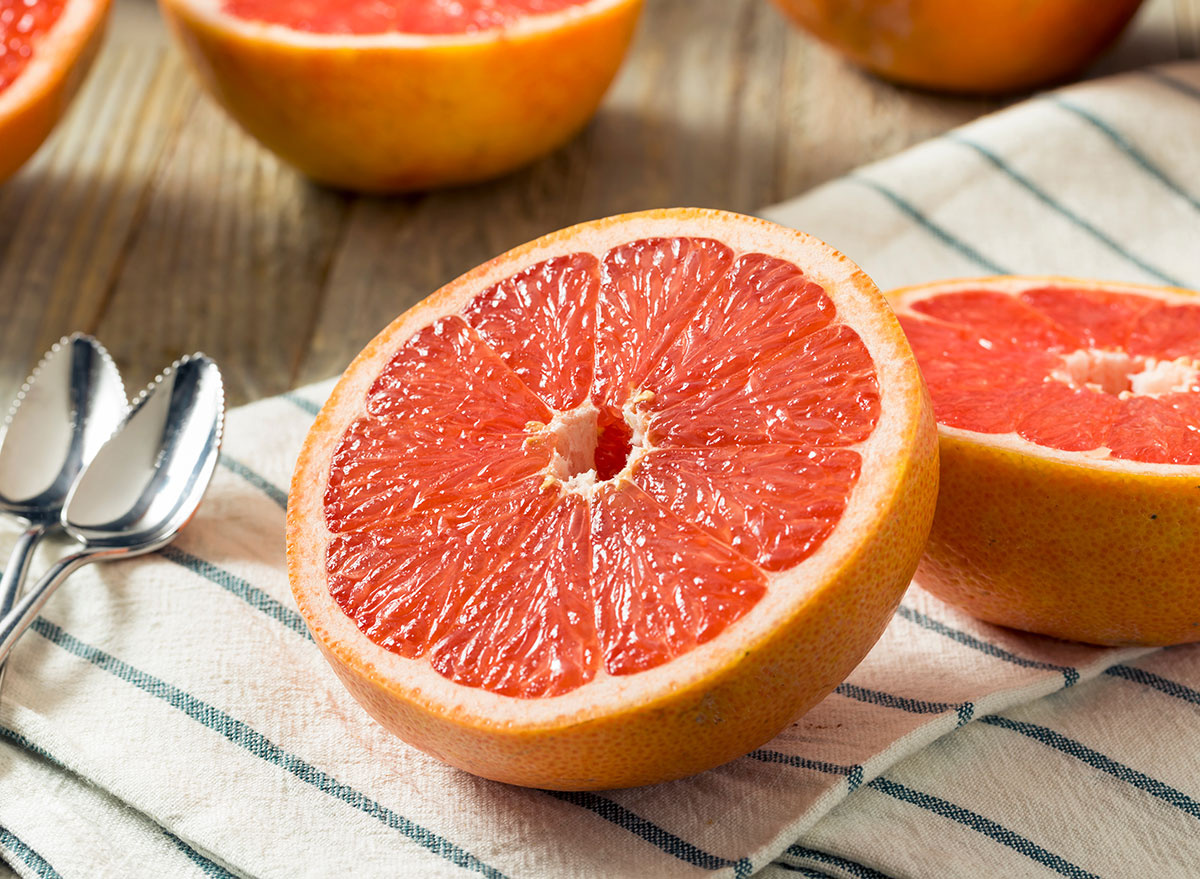
Peak season: October to June
How to pick: Opt for a heavy fruit (a sign of juiciness) with thin skin that is a tad responsive to a squeeze. Small imperfections in color and skin surface are not detrimental to the sweet-tart flavor. Yet, avoid any that are very rough or have soft spots. The same criteria apply for oranges.
How to store: Store refrigerated for 2 to 3 weeks.
Health benefits: Top bullet points on grapefruit’s resume include a high anti-cancer lycopene content and 120% of the day’s vitamin C needs in just 1 cup. For more foods that will keep you healthy and trim, check out these 30 Foods That Melt Love Handles.
Grapes
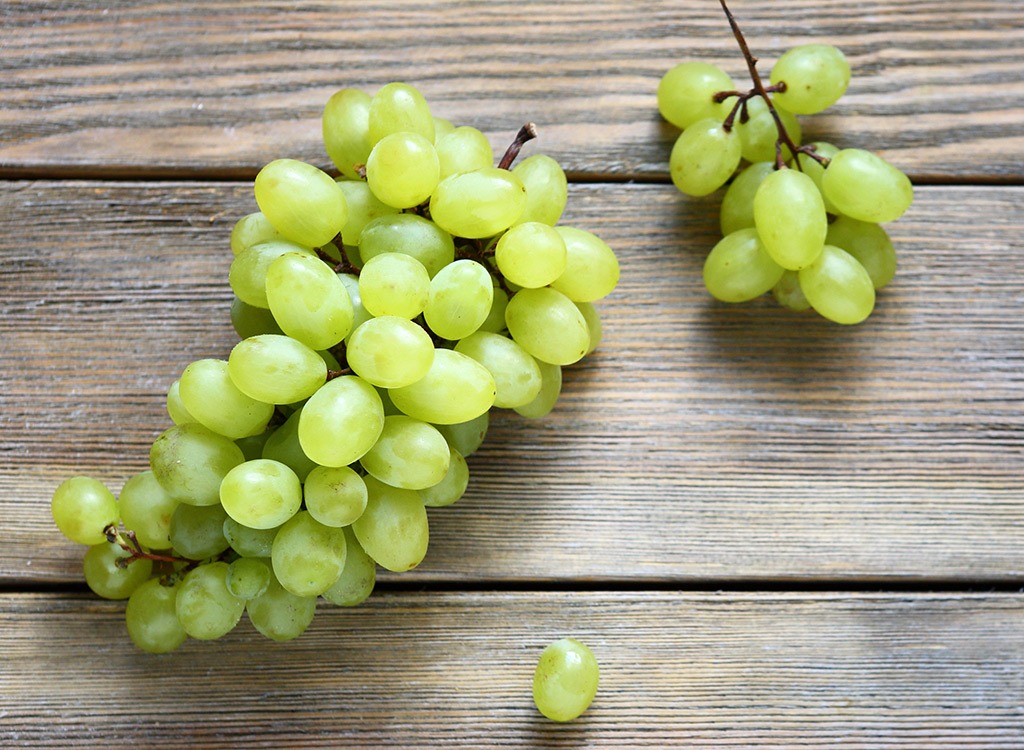
Peak season: June to December
How to pick: Look for grapes that are plump, wrinkle-free, and firmly attached to the stems. There should be no browning at the stem connection, but a silvery-white powder (“bloom”) keeps grapes, especially darker ones, fresher longer. Red grapes are best if full-colored with no green tinge. Green grapes with a yellowish hue are the ripest and sweetest.
How to store: Loosely store, unwashed, in a shallow bowl in the fridge for up to 1 week.
Health benefits: Red grapes are a good source of resveratrol, a potent antioxidant that offers protection against cardiovascular disease.
Green Beans

Peak season: April to October
How to pick: Buy green beans that have a vibrant, smooth surface without any visible withering. They should “snap” when gently bent.
How to store: Refrigerate, unwashed, in an unsealed bag for up to 1 week.
Health benefits: This tasty veggie packs 4 grams of belly-filling fiber per cup, which can ward off hunger and reduce all-cause mortality, according to Dutch researchers.
Kale
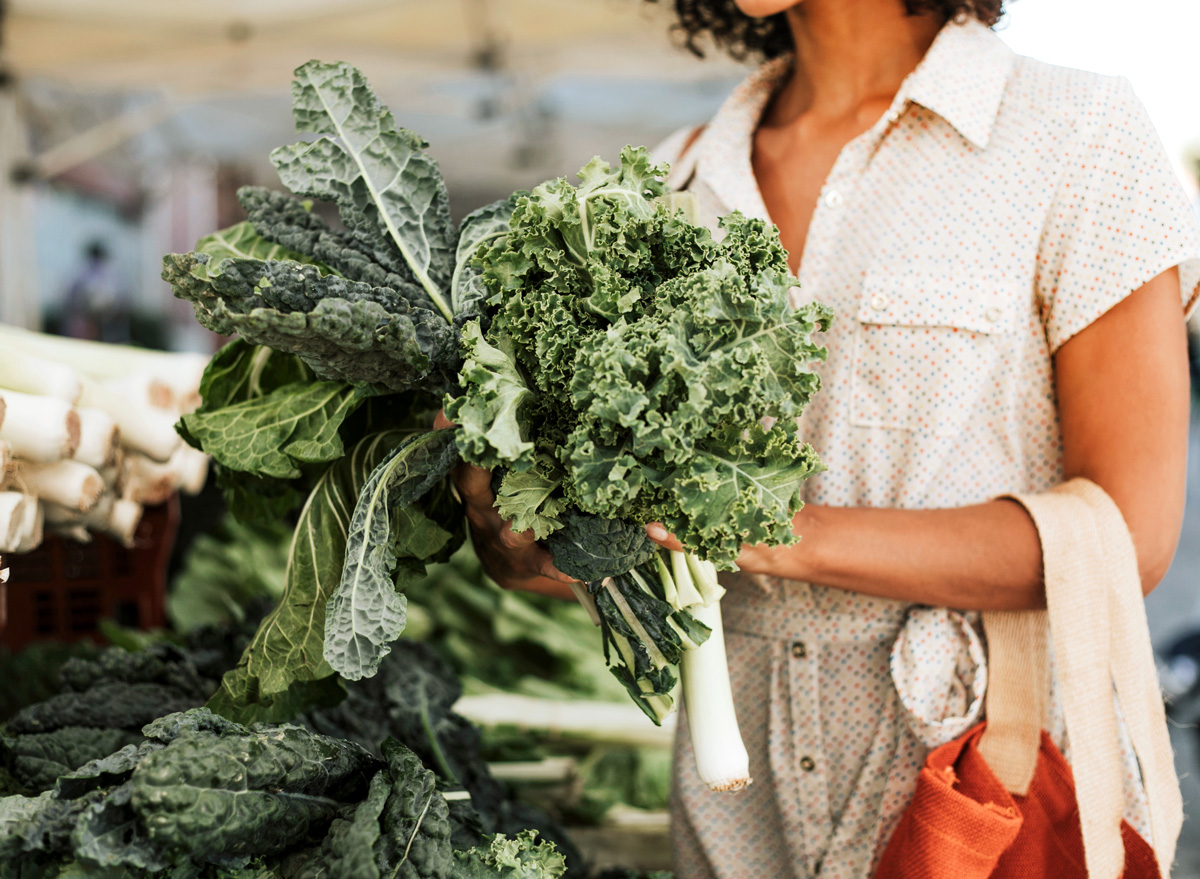
Peak season: Year-round
How to pick: Look for kale with dark blue-green, moist, and jaunty leaves. The smaller the leaves, the more tender the kale. Avoid wilted foliage with discolored spots.
How to store: Peppery kale is best kept in the fridge tightly wrapped in a plastic bag pierced for aeration, where it will last 3 to 4 days.
Health benefits: Kale serves up lutein, an antioxidant in the retina that protects against vision loss.
Kiwi
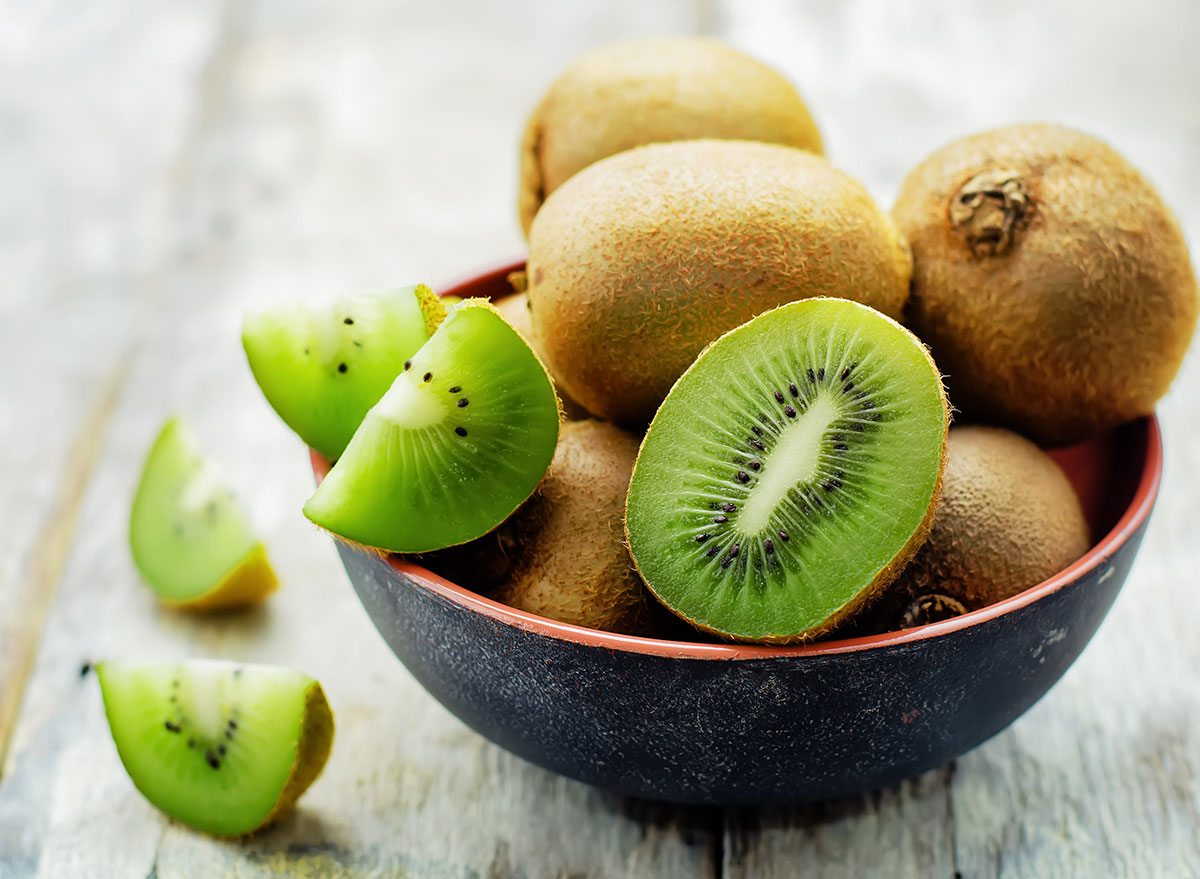
Peak season: June to August
How to pick: A ready-to-devour kiwi will be slightly yielding to the touch. Steer clear of those that are mushy, wrinkled, or bruised with an “off” smell.
How to store: Store at room temperature to ripen. To quicken the process, place in a paper bag with an apple. Once ripened, place in the fridge in a plastic bag for up to 1 week.
Health benefits: With only 56 calories for a large one and 20% more of the antioxidant vitamin C than an orange, it’s no wonder kiwi is one of The 25 Best Foods for Instant Detox.
Leeks

Peak season: Year-round
How to pick: Purchase leeks that have green, crisp tops with an unblemished white root end. Gravitate toward small- to medium-sized leeks, which are less woody and tough than larger ones. Those with spotted or yellowing leaves should be ignored.
How to store: Stored loosely wrapped in plastic in the fridge, they’ll keep fresh for a week. THE
Health benefits: Leeks carry a good amount of eye-protecting lutein, manganese, and vitamins A, C, and K. Not sure how to cook ’em?
Eggplant
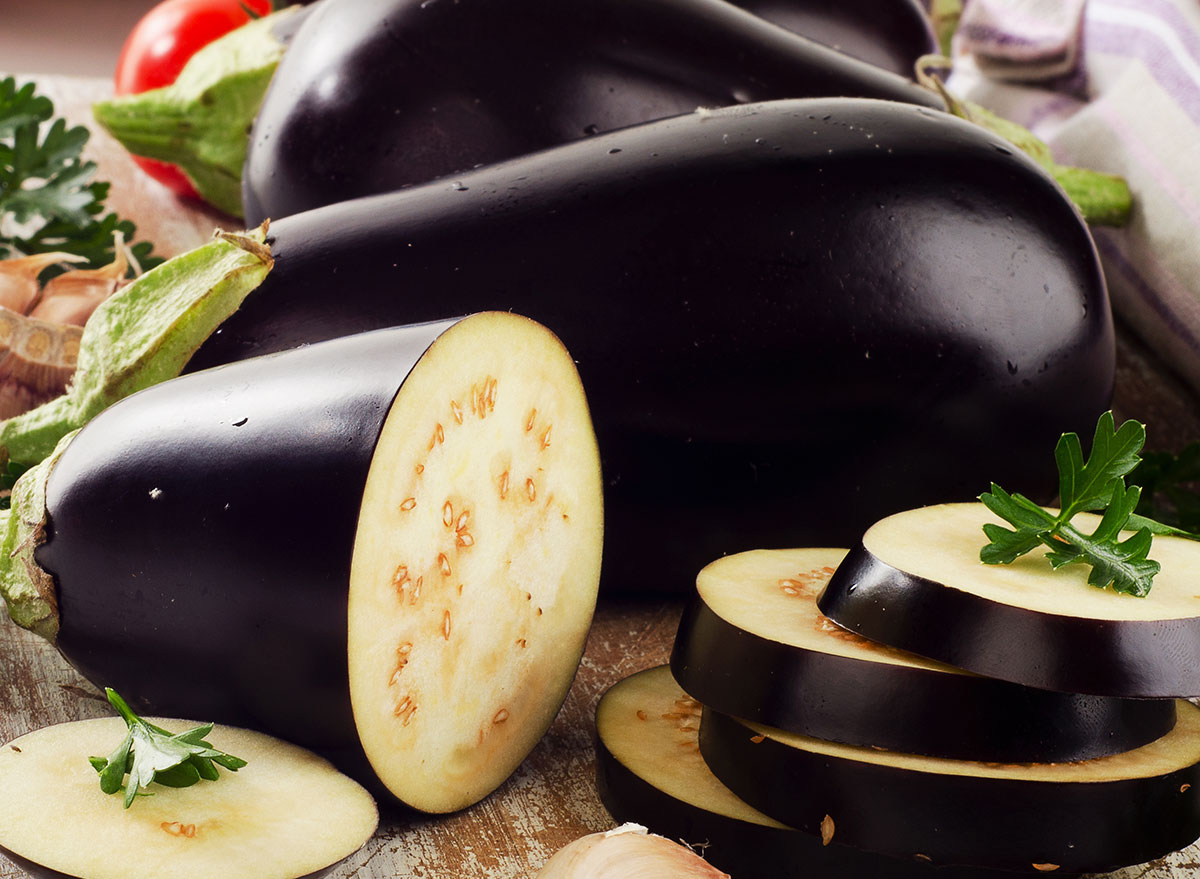
Peak season: August to September
How to pick: Look for eggplants that have a good weight and tight, shiny, wrinkle-free skin. When they’re pressed, look for them to be springy, not spongy. The stem and cap should be forest green, not browning.
How to store: Store eggplants in a cool location (not the fridge) for 3 to 5 days. Eggplants are quite sensitive to the cold.
Health benefits: The tasty purple veggie contains chlorogenic acid, a phenol antioxidant that scavenges disease-causing free radicals. It also contains powerful antioxidants called anthocyanins that provide neuroprotective benefits like bolstering short-term memory and reducing mood-killing inflammation.
Fennel

Peak season: Year-round
How to pick: Fennel bulbs should be uniform in color, with no browning and a clean, fragrant aroma. Smaller bulbs have a sweeter licorice-like flavor. Leave bulbs with wilted tops, called fronds, behind.
How to store: Separate the greens and bulbs and keep each, unwashed, in a plastic bag in the refrigerator for 3 to 5 days. Wilted fennel can be revived in ice water.
Health benefits: Fennel is filled with anethole, a phytonutrient that may lessen inflammation and cancer risk.
Figs

Peak season: July to September
How to pick: Figs should be plump with deeply rich color; soft but not mushy to the touch. Avoid those with bruises or a sour odor.
How to store: Place fresh figs on a plate lined with a paper towel and eat them as they ripen. They bruise easily, so gentle handling is prudent. They also ripen quickly, so eat within a few days of purchasing. If overripe, simmer with a bit of water, sugar, and balsamic vinegar for a fig jam or sauce.
Health benefits: Figs contain phytosterols, which help keep cholesterol levels in check. They also carry a bit of bone-building calcium. (Three medium fruits carry 5% of the daily recommended intake.)
Cantaloupe
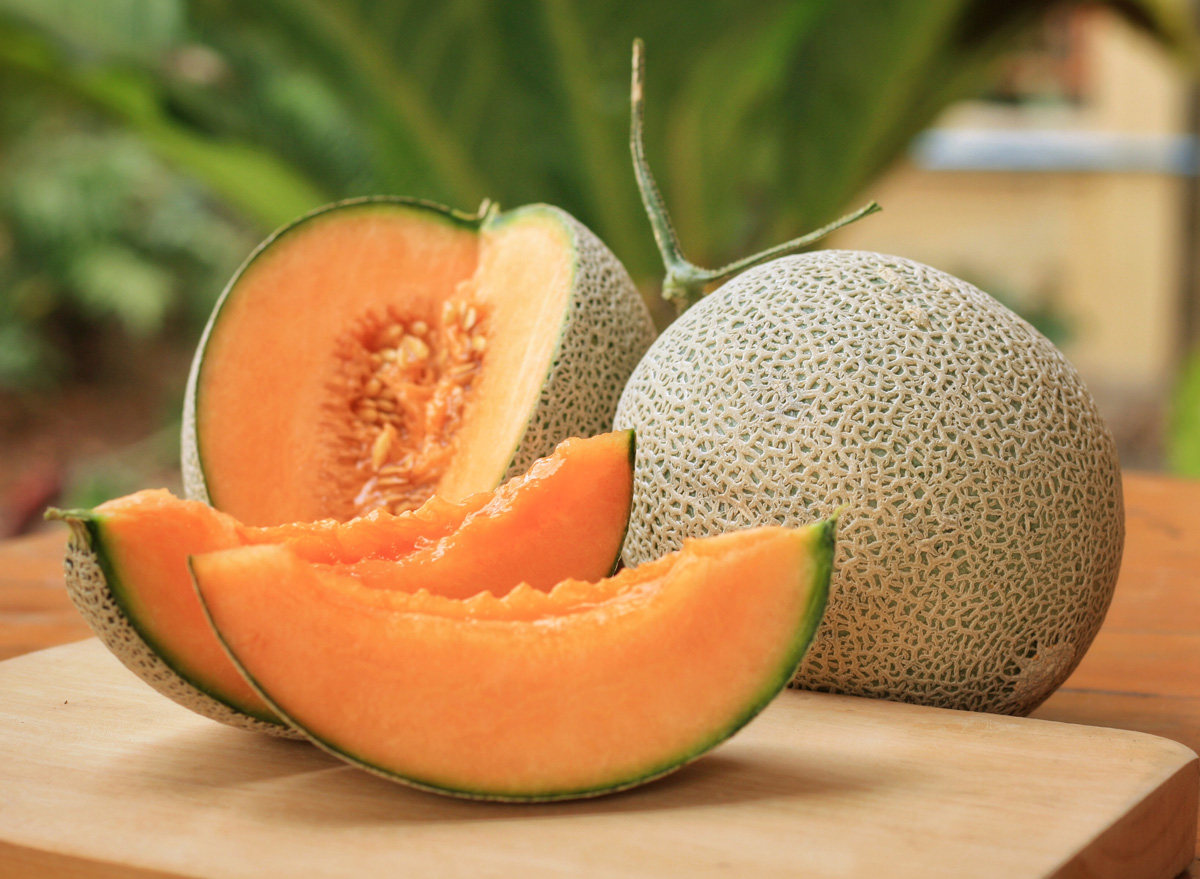
Peak season: May to September
How to pick: The stem end of the melon should have a smooth indentation. Look for a sweet aroma, slightly oval shape, and a good coverage of netting. The blossom end should give slightly to pressure. Avoid those with soft spots—an indication of an overripe melon.
How to store: Ripe cantaloupes should be stored in plastic in the fridge for up to 5 days, after which they begin to lose flavor.
Health benefits: Cantaloupes have loads of vitamin C, which may offer protection against having a stroke. The vitamin has also been shown to elevate mood and counteract stress hormones that leave you feeling tense and trigger the storage of belly fat. Aside from noshing on melon, there are plenty of other ways to fight back against a widening waistline.
Onions
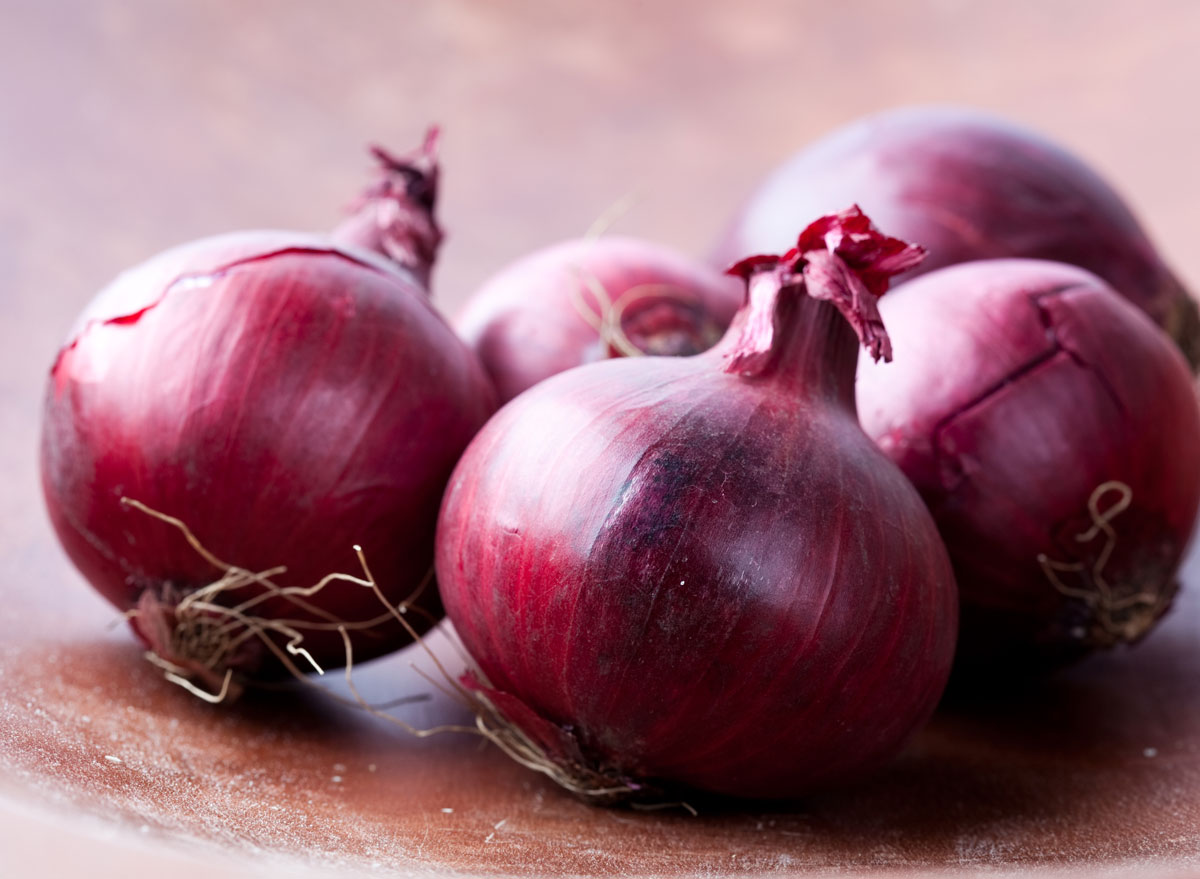
Peak season: Year-round
How to pick: An A+ onion is nicely shaped with no swelling at the neck and dry, crisp outer skin. Lackluster onions have soft spots, green sprouts, or dark patches.
How to store: Keep onions in a cool, dark location away from potatoes for 3 to 4 weeks.
Health benefits: You’ll find GPCS in onions. The peptide has been shown to reduce bone loss in rats. The pungent veggie is also a source of quercetin, a flavonoid that increases blood flow and activates a protein in the body that helps regulate glucose levels, torches stored fat and keeps new fat cells from forming.
Pears
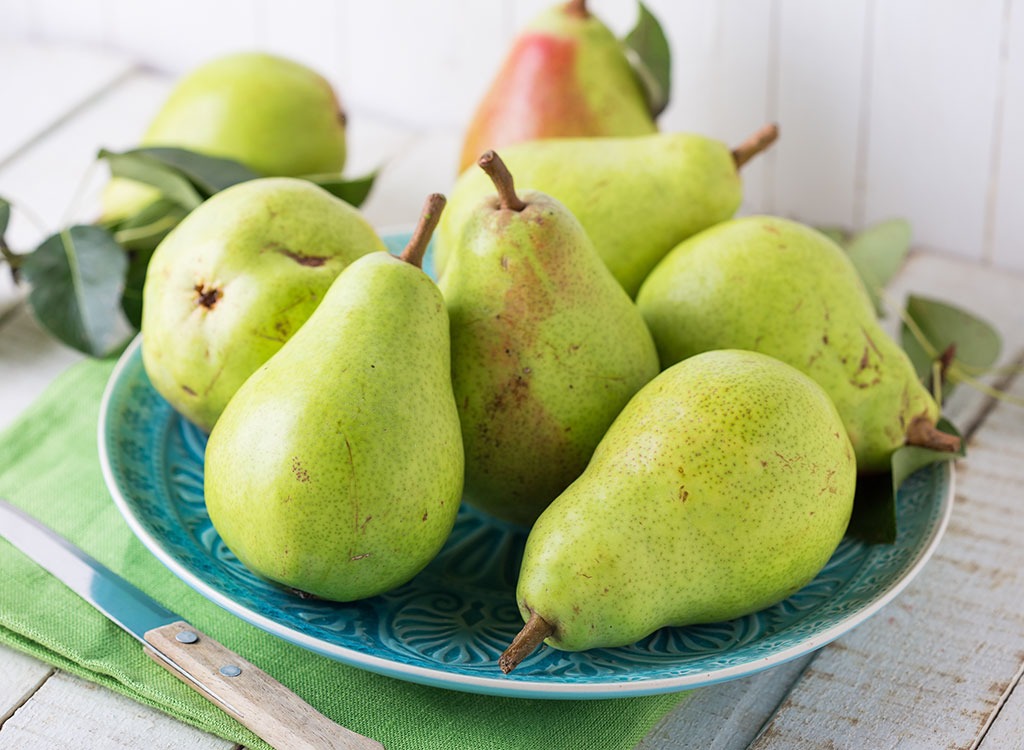
Peak season: August to February
How to pick: Perfect, ready-to-eat pears have a pleasant fragrance with some softness at the stem end. The skin should be free of bruises, but some brown discoloration (russeting) is fine. Firmer pears are preferable for cooking use.
How to store: Ripen at room temperature in a loosely closed brown paper bag. Refrigerate once they’re ripe and consume within a couple days.
Health benefits: Pears pack a respectable amount of belly fat-blasting fiber and vitamin C—as long as you eat them with the skin on.
Pomegranates

Peak season: August to December
How to pick: Pick pomegranates that are weighty for their size with glossy, taut, uncracked skin that is deep red. Gently press the crown end—if a powdery cloud emanates, the fruit is past its prime.
How to store: Stored in a cool, dry location, pomegranates keep fresh for several weeks (up to 2 months in the fridge).
Health benefits: The red, vibrant fruit has hefty amounts of antioxidants shown to improve sperm quality and fertility.
Brussels Sprouts
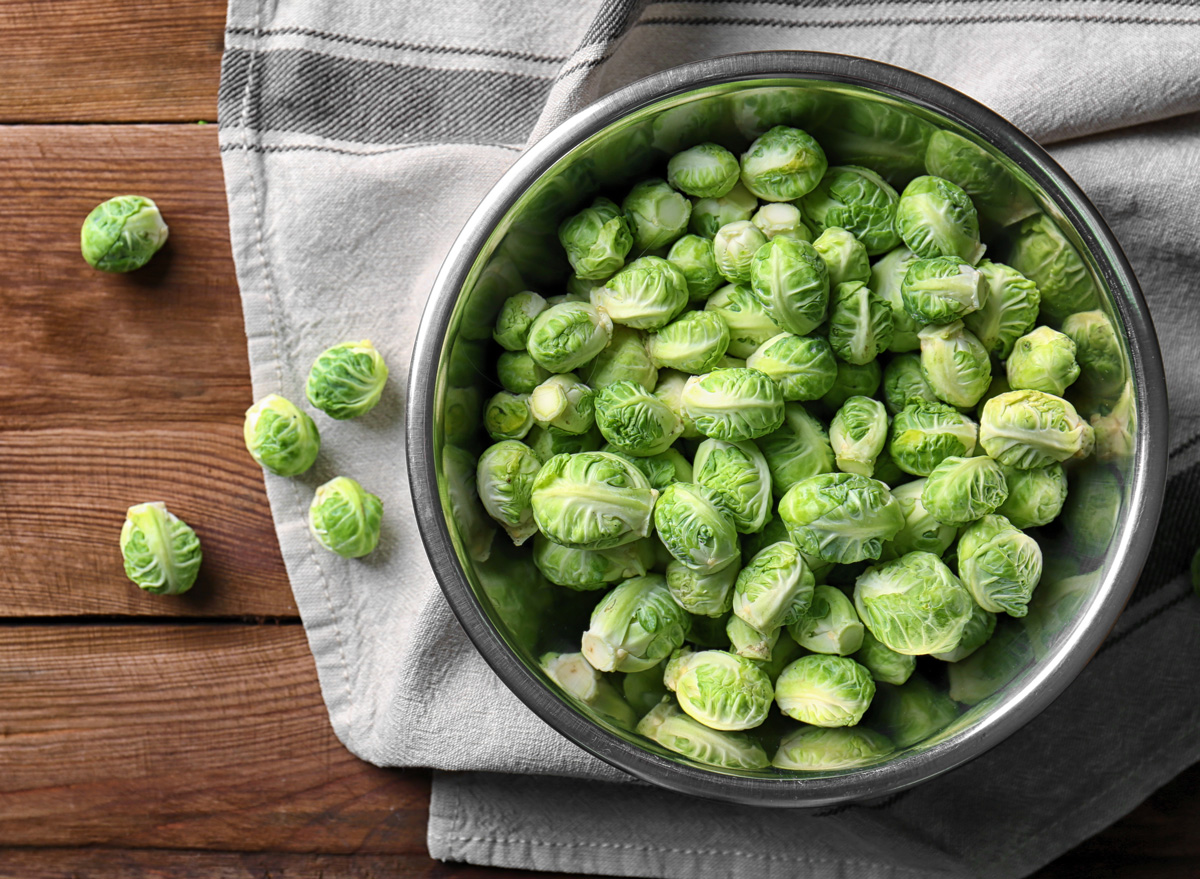
Peak season: October to November
How to pick: Look for compact, tight, and un-shriveled heads that are vibrant green and feel overweight for their size. Select ones of similar size for ease of cooking, knowing that smaller sprouts pack sweeter flavor.
How to store: Refrigerate, unwashed, in a tightly wrapped perforated plastic bag for up to 2 weeks.
Health benefits: Sprouts contain nitrogen compounds called indoles, which have cancer-protecting efficacy. They’re also an excellent source of vitamin C, delivering up to a day’s worth in just a cup.
Butternut Squash
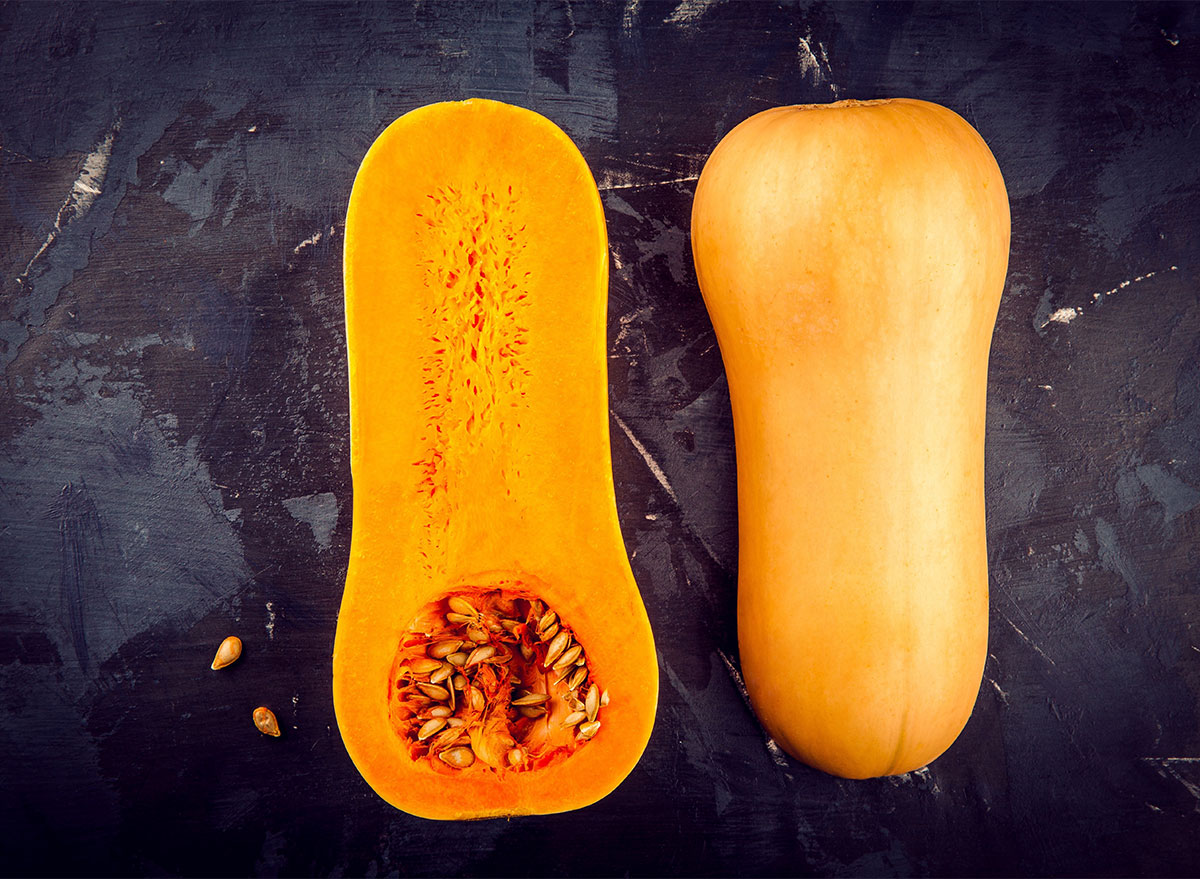
Peak season: September to November
How to pick: This vibrant, fall veggie should feel dense for its size with a rind that is smooth, hard, uniformly tan, and free of splits. Being able to easily push a fingernail into the rind or scrape bits off indicates an immature, less flavorful squash.
How to store: Butternut should be stored outside the fridge in a cool, well-ventilated, dark place, where it will stay edible for up to 3 months.
Health benefits: Butternut squash has a huge amount of vitamin A to ramp up your immune system.
Artichokes
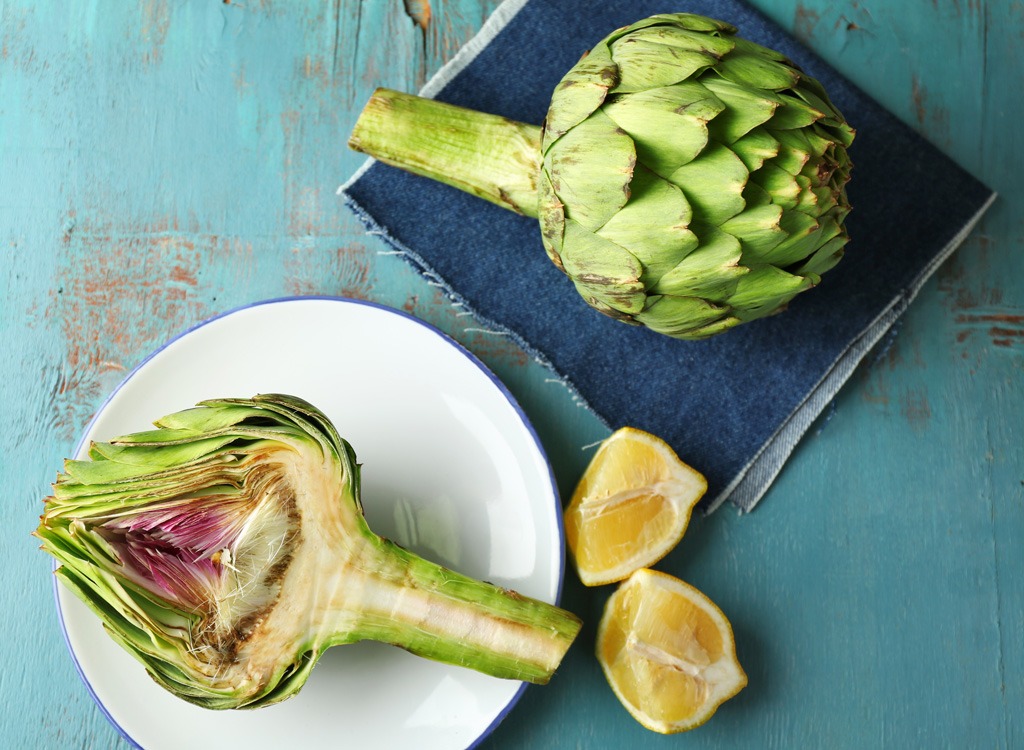
Peak season: March to May
How to pick: An artichoke with deep green, heavyset, undamaged, tightly closed leaves is the best bet. The leaves should squeak when pinched together.
How to store: Store in the fridge in a plastic bag for up to 5 days.
Health benefits: Artichokes have a higher total antioxidant capacity than any other common vegetable, according to USDA tests.
Watermelon
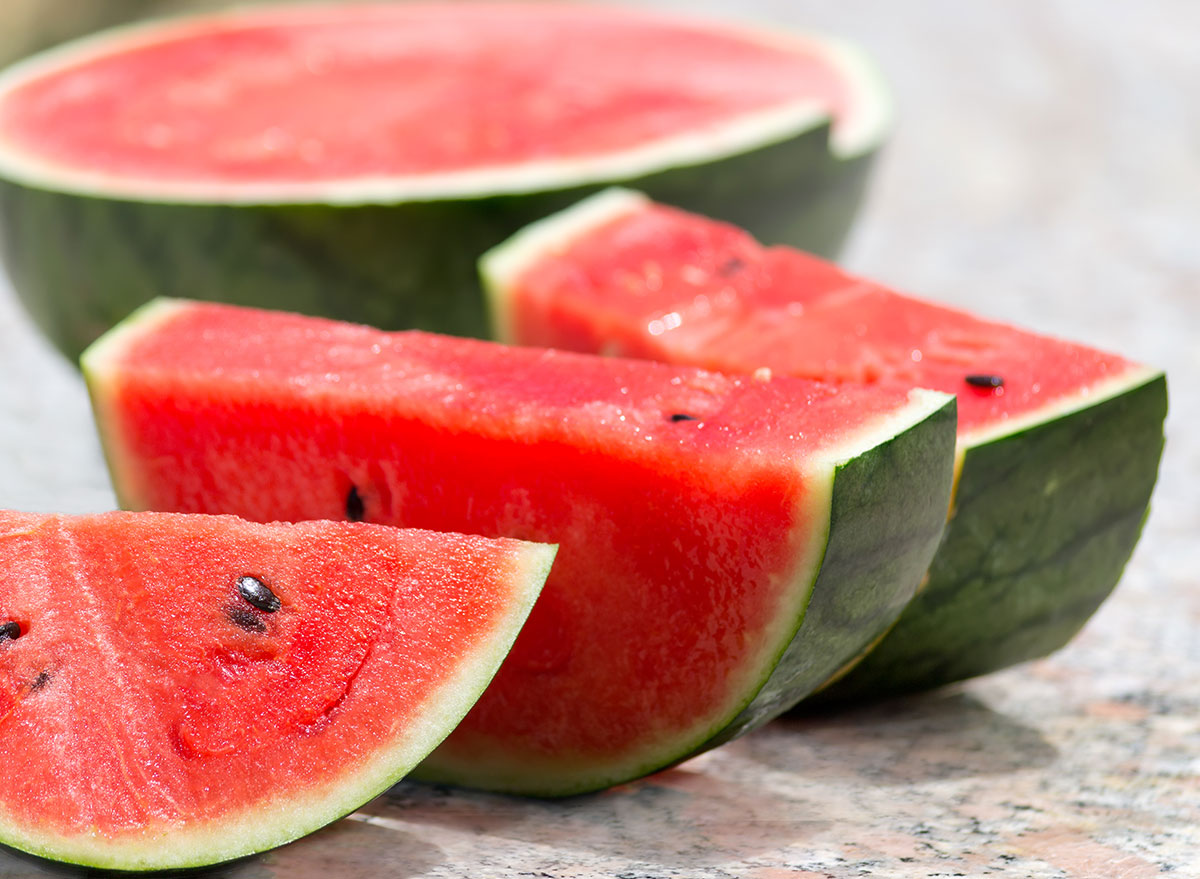
Peak season: May to August
How to pick: Look for a dense, symmetrical melon that is free of cuts and sunken areas. The rind should appear dull, not shiny, with a rounded creamy-yellow underside that shows where ground ripening took place. A slap should produce a hollow thump.
How to store: Store whole in the fridge for up to 1 week. The cold prevents the flesh from drying out and turning fibrous.
Health benefits: Watermelon is overflowing with citrulline, an amino acid that’s converted to arginine, which relaxes blood vessels, thus improving blood flow.
Beets
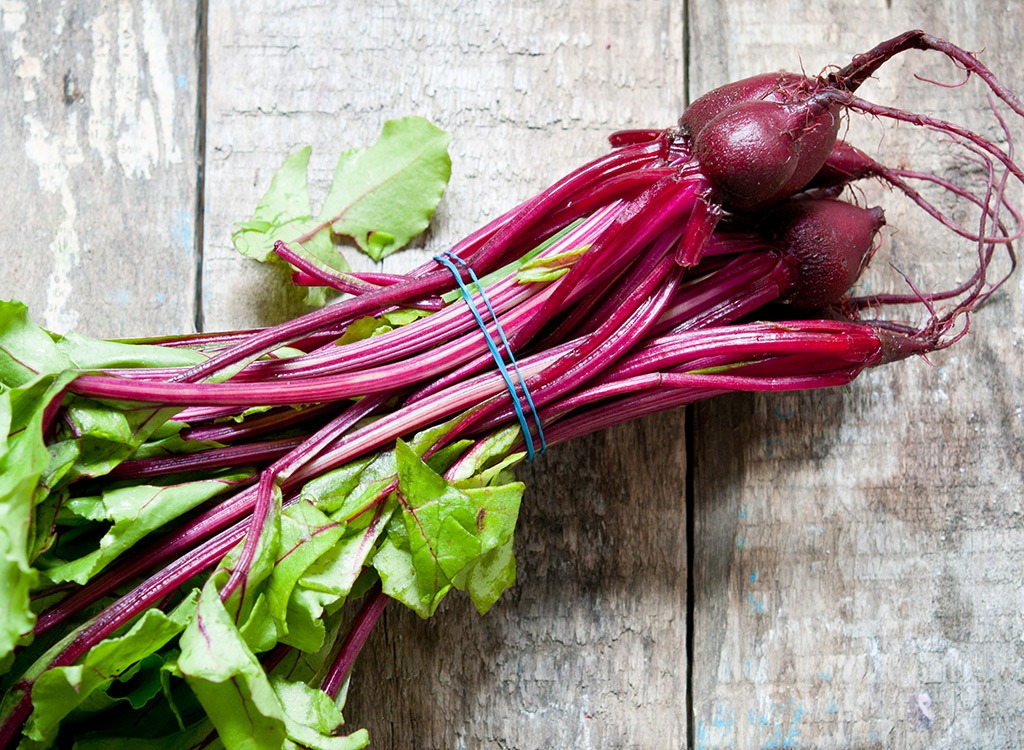
Peak season: June to October
How to pick: A beet that’s in its prime should have a smooth, deep-red surface that’s unyielding when pressed. Smaller roots are sweeter and more tender. Attached greens should be deep green and not withered.
How to store: Remove the leaves (which are great sautéed in olive oil) and store them in a plastic bag in the fridge for no more than 2 days. The beets will last in the crisper for up to 2 weeks.
Health benefits: Beets serve up a hefty dose of folate, which may help regulate cholesterol levels and boost heart health. For more ways to keep your heart in tip-top shape, check out these 50 Easy Things You Can Do Daily for Better Heart Health.